- Founded in a log cabin in 1787, the University of Pittsburgh is among the oldest institutions of higher education in the United States. The University has nearly 169,000 alumni living in all 50 states and 4 territories and 117 foreign countries whose accomplishments range from winning Olympic gold medals to unlocking the secrets of DNA. From University laboratories have come Jonas Salk's polio vaccine and the identification of Vitamin C. Today, this former frontier University is an internationally recognized center of learning and research, strong in the arts and sciences and the professions.
School Highlights
University of Pittsburgh-Titusville serves 23 students (61% of students are full-time).
Minority enrollment is 66% of the student body (majority Black and Hispanic), which is more than the state average of 48%.
Quick Stats (2025)
- Enrollment: 23 students
- In-state tuition: $11,604
- Out-state tuition: $21,166
- Acceptance Rate: 47%
- Minority enrollment: 66%
- Source: Integrated Postsecondary Education Data System (IPEDS)
Top Rankings
University of Pittsburgh-Titusville ranks among the top 20% of public schools in Pennsylvania for:
Category
Attribute
Selectivity
School Resources
School Overview
The teacher population of 53 teachers has stayed relatively flat over five years.
University of Pittsburgh-Titusville
(PA) Community College Avg.
Carnegie Classification
Associate's Colleges: High Career & Technical-High Traditional
Baccalaureate/Associate's Colleges: Mixed Baccalaureate/Associate's
Institution Level
At least 2 but less than 4 years
At least 2 but less than 4 years
Institution Control
Public
Private not-for-profit
Total Faculty
53 staff
58 staff
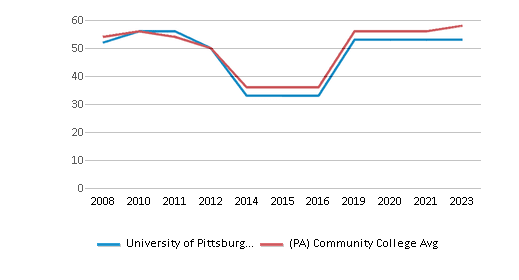
School Calendar
Student Body
The student population of University of Pittsburgh-Titusville has declined by 82% over five years.
The University of Pittsburgh-Titusville diversity score of 0.61 is less than the state average of 0.68. The school's diversity has grown by 92% over five years.
Total Enrollment
23 students
361 students
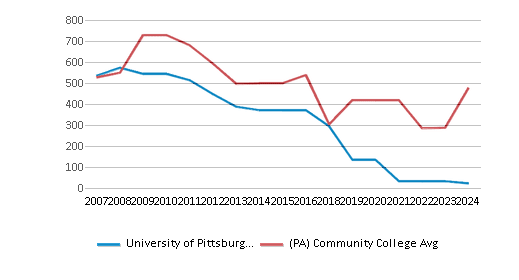
Student : Teacher Ratio
n/a
15:1
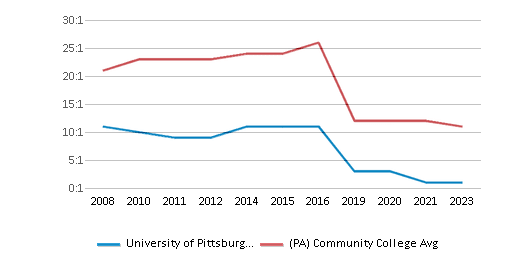
# Full-Time Students
14 students
310 students
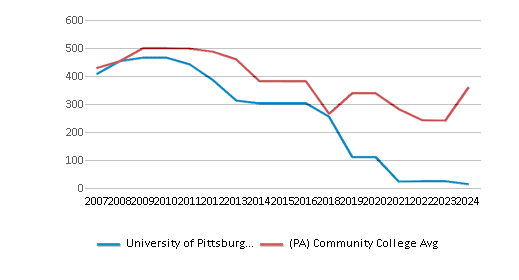
# Part-Time Students
9 students
134 students
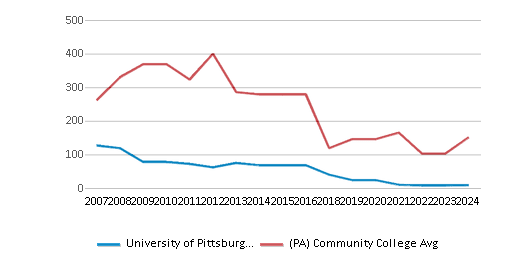
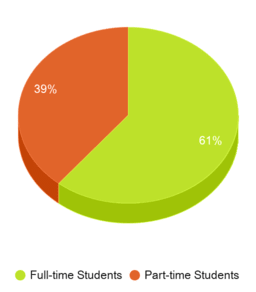
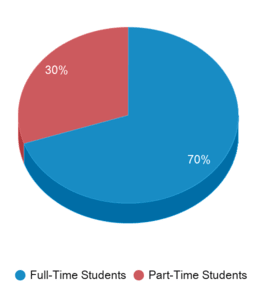
# Enrollment Undergraduate
23 students
300 students
# Full-Time Undergraduate Students
14 students
300 students

# Full-Time Graduate Students
n/a
10 students
# Part-Time Undergraduate Students
9 students
134 students
# Part-Time Graduate Students
n/a
12 students
Total Dormitory Capacity
160 students
330 students
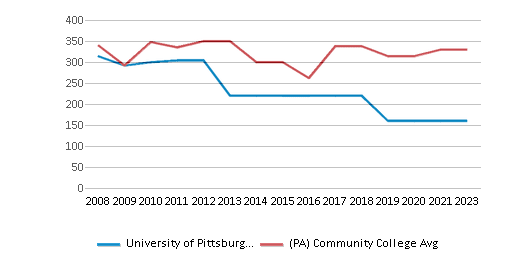
% American Indian/Alaskan
2%
n/a
% Asian
2%
5%
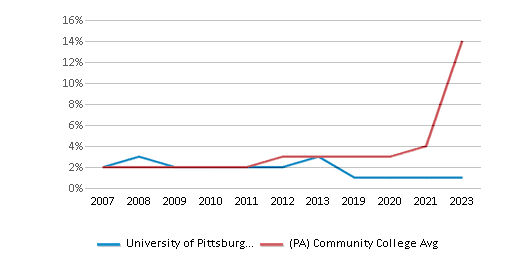
% Hispanic
2%
11%
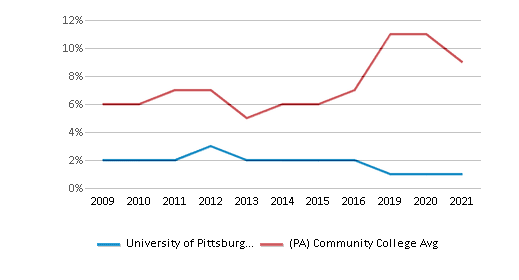
% Black
2%
15%
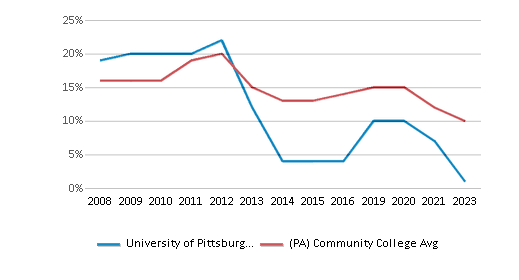
% White
34%
52%
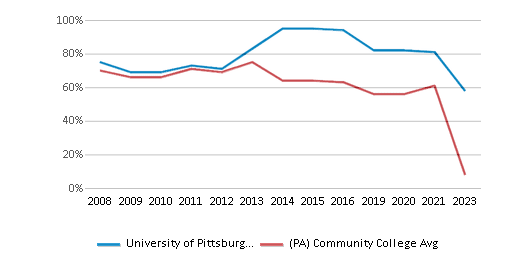
% Hawaiian
52%
3%
% Two or more races
2%
3%
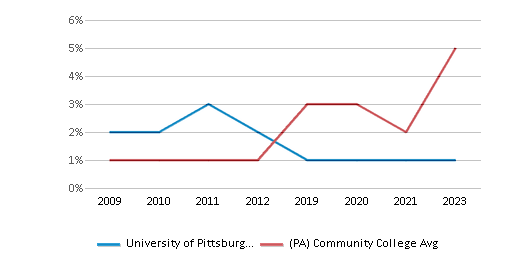
% Non Resident races
5%
1%
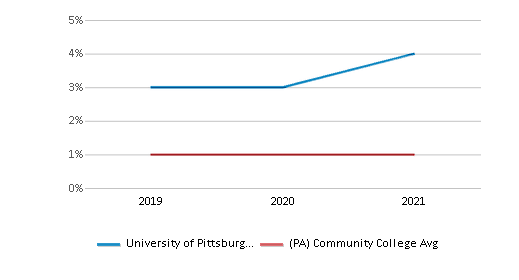
% Unknown races
2%
10%

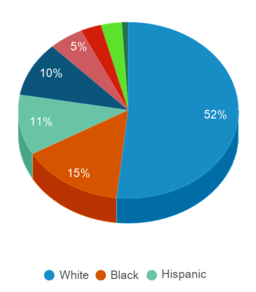
Diversity Score
0.61
0.68

College Completion Rate (Students who graduate in less than 4 years)
0.1379%
0.6111%
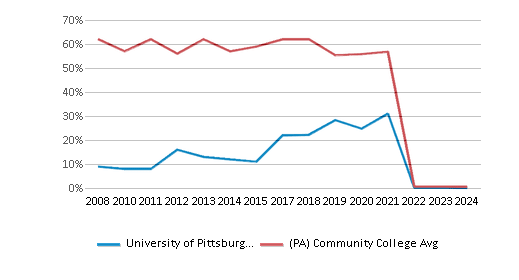
College Completion Rate (Students who graduate in 4 years or more than 4 years)
n/a
0.3822%
Average Graduate Earnings (10 Years)
$55,900
$34,900
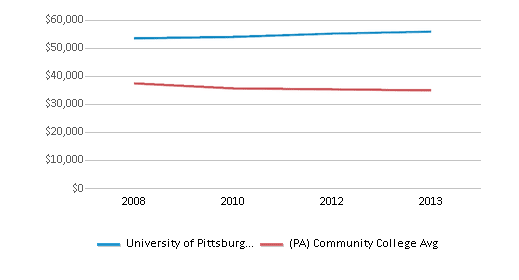
Tuition and Acceptance Rate
The public in-state tuition of $11,604 is more than the state average of $10,557. The in-state tuition has stayed relatively flat over four years.
The public out-state tuition of $21,166 is more than the state average of $15,342. The out-state tuition has stayed relatively flat over four years.
In-State Tuition Fees
$11,604
$10,557
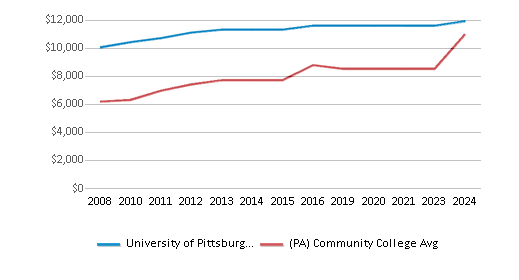
Out-State Tuition Fees
$21,166
$15,342
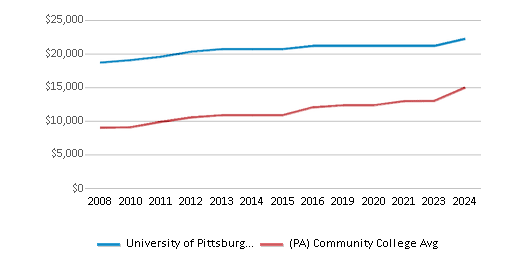
% Students Receiving Some Financial Aid
100%
91%
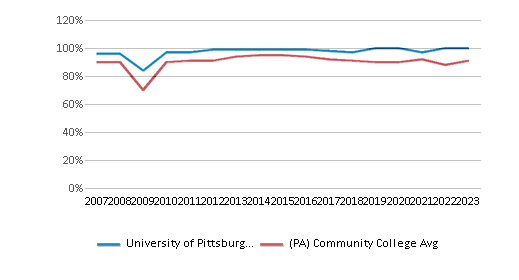
Median Debt for Graduates
$24,550
$13,620
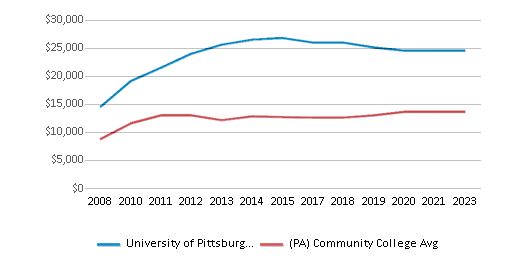
Median Debt for Dropouts
$8,750
$6,234
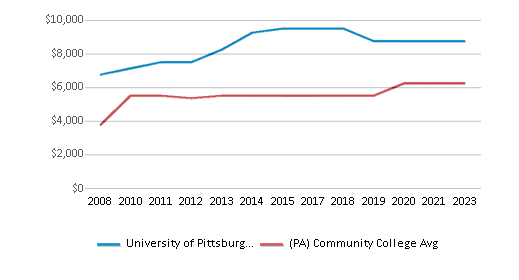
Acceptance Rate
47%
78%
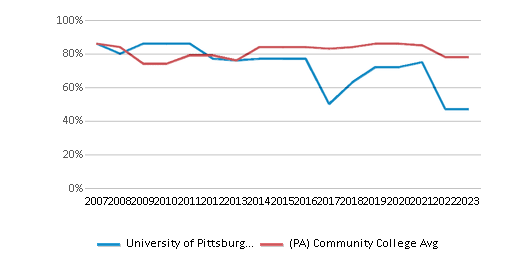
SAT Total Avg.
1,300
1,365
SAT Reading
445
460

SAT Math
440
470
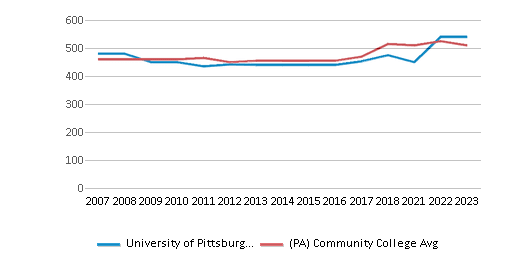
SAT Writing
415
435
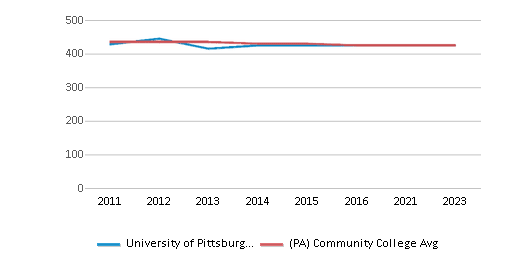
ACT Total Avg.
64
68
ACT Composite
19
20
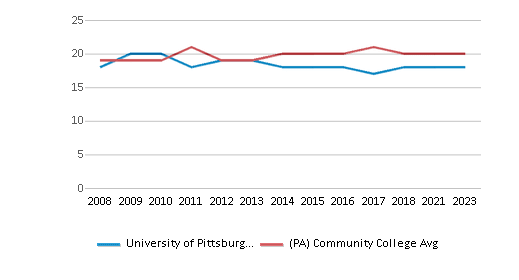
ACT English
18
20
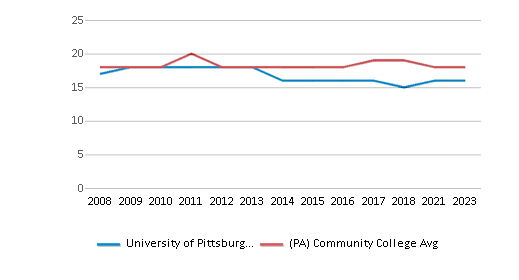
ACT Math
20
21
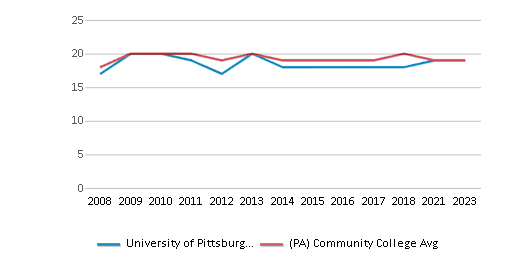
ACT Writing
7
7
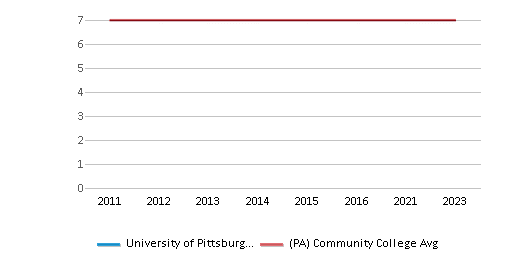
Source: 2024 (or latest year available) Integrated Postsecondary Education Data System (IPEDS)
School Notes
- The college offers Associate Degrees and Certificate Programs. Associate of Arts degree is offered in Human Services and Liberal Arts. The college offers Associate of Science degree in Natural Science, Nursing, Business, Accounting, Business Information Systems and Physical Therapist Assistant. Pitt has several programs ranked in the top 26 in their field nationally including anthropology, art history, history and philosophy of science, industrial engineering, and linguistics. Pitt also has many other highly ranked programs including chemistry, economics, English language and literature, music, pharmacology, physics, political science and psychology, among others. Pitt athletes have won national championships in football, conference titles in many sports, national rankings in basketball, wrestling and volleyball, and individual national championships in gymnastics, swimming and track and field. Former Pitt track and field star Roger Kingdom is a two-time Olympic gold medalist. Pitt's University Center for International Studies offers an extensive study-abroad program, and the opportunity to spend an entire semester aboard the SS Universe, the world's only floating campus. UCIS also offers area studies programs in Asian, East Asian, Latin American, East European, Russian, Soviet Studies and West European Studies. Pitt was ranked as one of the 100 "best college values" in higher education among national universities in a 1996 Money Magazine report.
Frequently Asked Questions
How much does University of Pittsburgh-Titusville cost?
University of Pittsburgh-Titusville's tuition is approximately $11,604 for In-State students and $21,166 for Out-State students.
What is the acceptance rate of University of Pittsburgh-Titusville?
The acceptance rate of University of Pittsburgh-Titusville is 47%, which is lower than the state average of 78%. University of Pittsburgh-Titusville's acceptance rate is ranked among the top community colleges in Pennsylvania with low acceptance rates.
What is University of Pittsburgh-Titusville's ranking?
University of Pittsburgh-Titusville ranks among the top 20% of community college in Pennsylvania for: Lowest acceptance rates and Percent of students receiving financial aid.
Recent Articles

Obtaining Your Bachelor's Degree at a Community College
Explore the evolving landscape of community colleges offering bachelor's degrees, addressing affordability, accessibility, and workforce needs.

A to Z of Community College Certificates and Courses
From business and healthcare to technology and skilled trades, the article showcases the breadth of options available to students seeking to enhance their knowledge, develop new skills, or pursue career advancement.

What is a Community College?
This comprehensive guide explains what a community college is, its history, and its role in higher education. It covers the types of programs offered, differences from four-year colleges, benefits of attending, and important considerations for prospective students, providing valuable insights for those exploring educational options.








